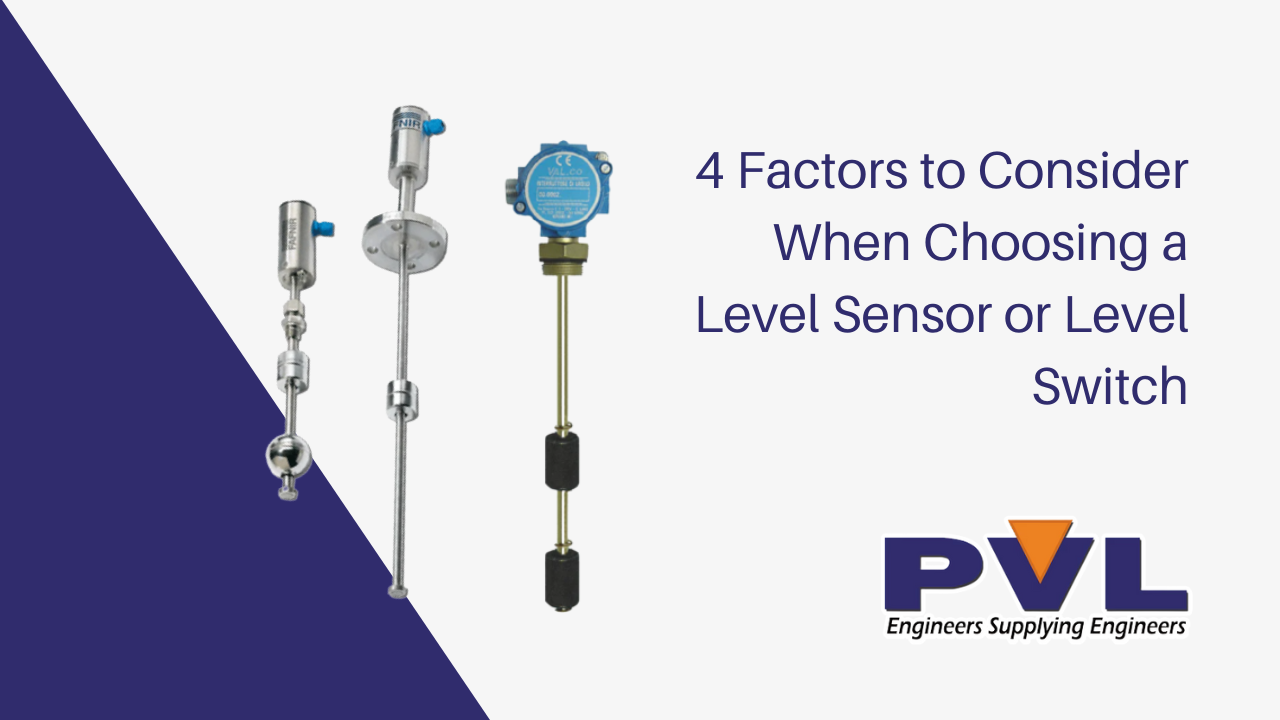
4 Factors to Consider When Choosing a Level Sensor or Level Switch
When looking for a level switch, it is important to understand the distinction between a level switch and a level sensor.
This blog post will discuss the main distinctions and factors to consider when deciding between a level switch and a level sensor.
1. Operating Principle
Level Switch: When a specific specified level is achieved, a level switch detects the presence or absence of fluid. They primarily function as an on/off switch to activate a function when the tank or vessel level increases or falls to a specified level. This could be to sound an alarm or to activate a piece of machinery. The switch senses when the liquid has achieved the desired temperature and works as a switch to initiate the appropriate response.
Level Sensor: When measuring every conceivable intermediate level of a tank or vessel, also known as continuous level measurement, a continuous level sensor is required. This means that the sensor sends feedback regardless of the liquid level.
2. Measuring Task
Level Switch: A level switch is typically used in processes where high or low levels must be monitored. Preventing overfills, dry runs, and leaks.
Level Sensor: A continuous level sensor communicates the precise amount of fluid to be monitored. Ideally suited for operations requiring enhanced precision and applications, knowing the level is critical.
3. Environmental Factors
Various environmental elements can indicate which type of sensor will perform best for the application and distinguish between a continuous level sensor and a point level switch. Factors like:
- Temperature and pressure: Different materials and designs of level switches and sensors may or may not be suitable depending on the operating temperature and pressure in the application environment.
- Chemical compatibility: The sensor or switch housing material type should be chosen based on the monitored liquid media. Consider whether the liquid media may accumulate or coat surfaces; solid-state sensors with no moving parts are desirable in these circumstances.
- Measurement range: The vessel or tank depth and the distance between the liquid surface and the sensor will help select the appropriate sensor.
- Response or output type: Different sensors are better suited to produce various outputs, including analogue, relay, and digital.
- Tank size and shape: Tanks that are extremely wide or narrow, as well as those that do not have access to attach sensors on the sides, top, or bottom, will have special requirements. Ultrasonic sensors, for example, will not be ideal for narrow-shaped tanks.
4. Level Sensor and Point Level Switch Types
Even though most level sensor technologies fall into one of two groups (continuous level sensors or point level switches), many distinct types of devices within each category are appropriate for an infinite number of applications.
PVL Level Switches & Sensors
Pressure Vacuum Level Ltd has been selling high-quality level switches and sensors for over 28 years.PVL provides these devices for various industries.
Don't hesitate to contact us if you have any questions about our level switches and sensors or other products by emailing sales@pvl.co.uk or calling +44 (0) 1892 66 44 99

